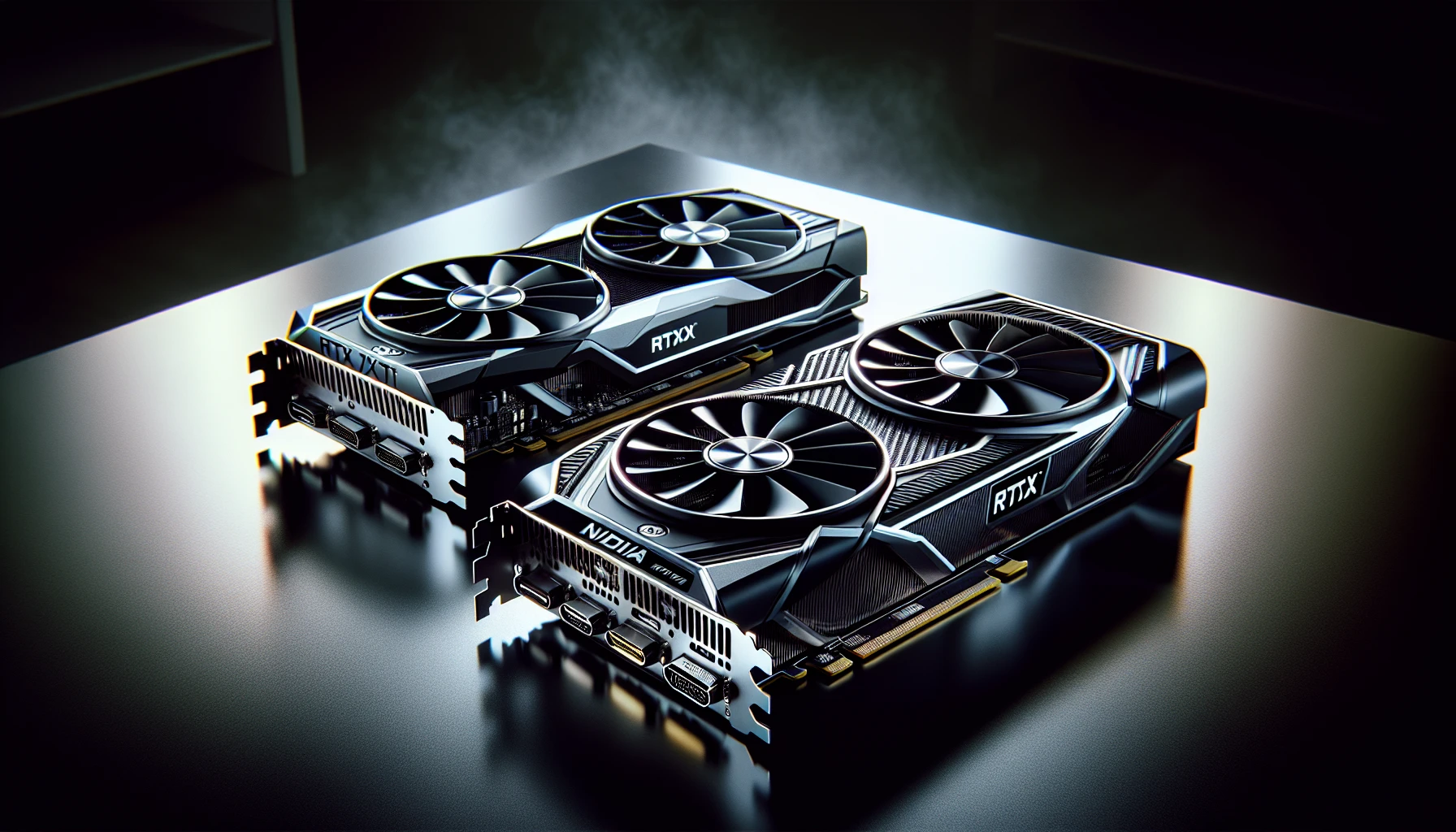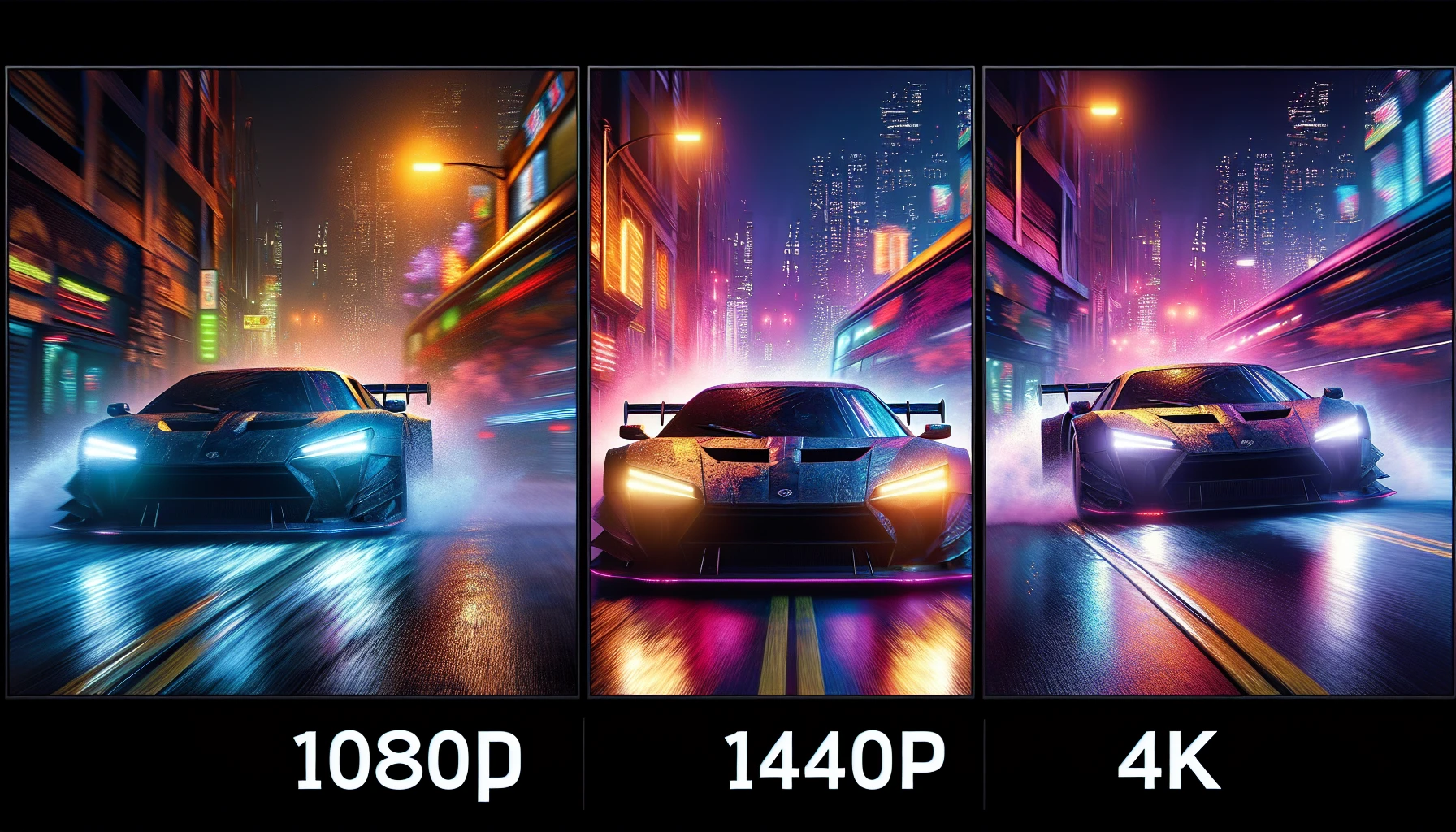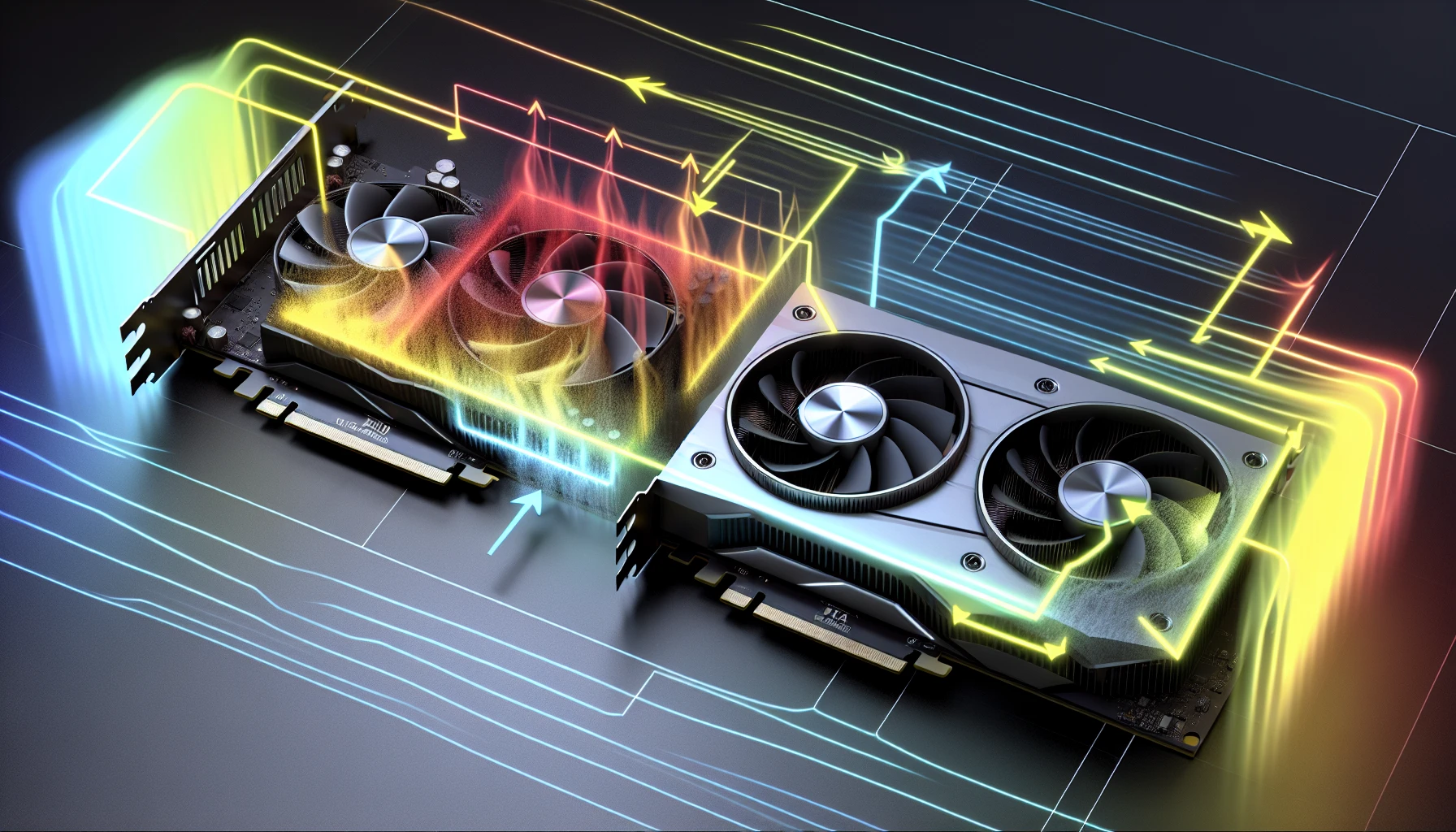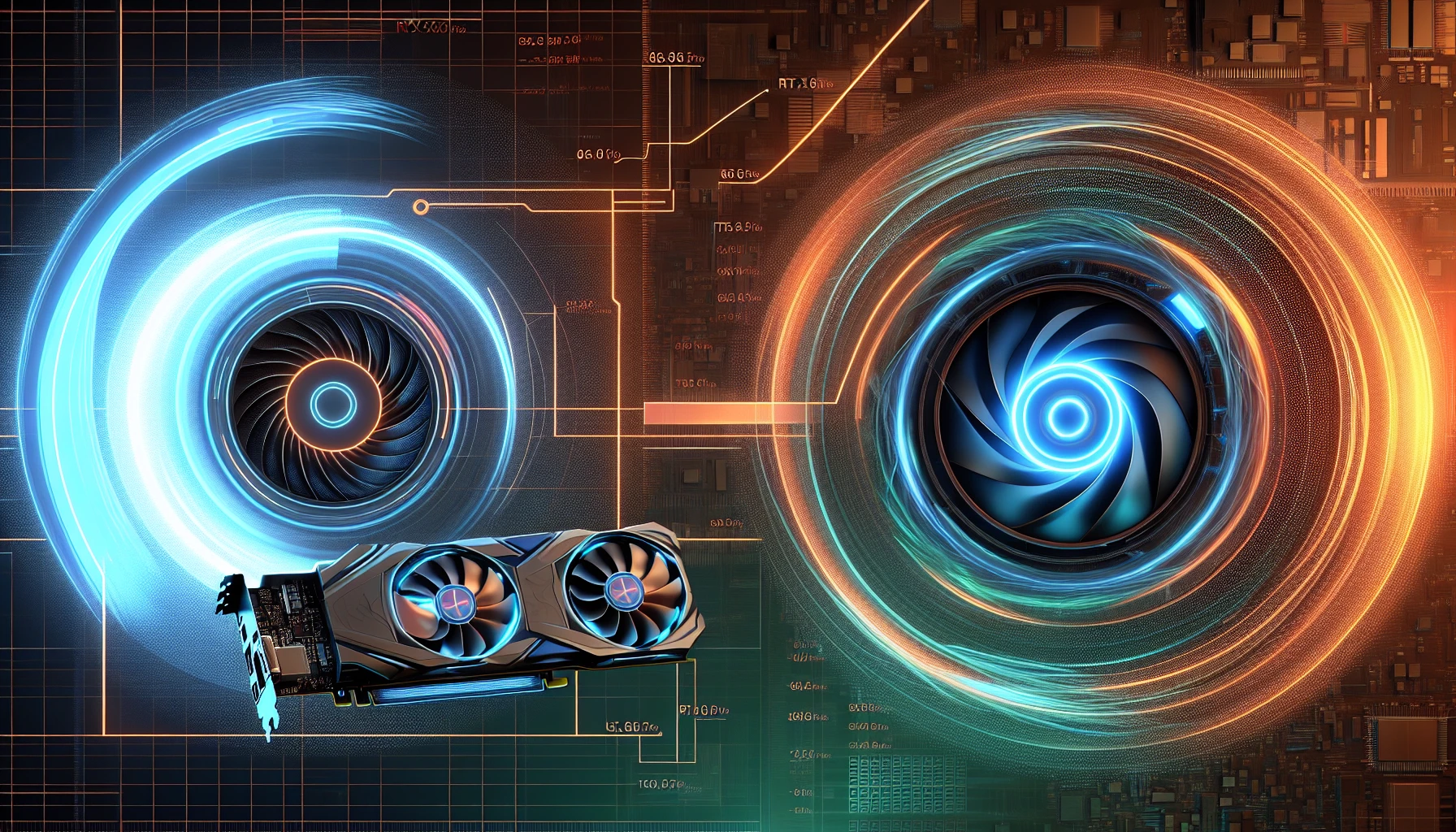Battle of the GPUs: 3060 vs 3060 Ti Comparison and Best Pick for Gamers

Selecting the ideal GPU for your gaming computer is paramount to reaching peak performance and visuals while playing games. With so many choices on offer, which one should you go for? Enter 3060 vs 3060 Ti in a battle of GPUs! In this article, we’ll take an in-depth look at their specs, including thermal dynamics, power consumption levels, and how they perform under different resolutions, plus value proposition/futureproofing potentials, all of which will allow us to decide which graphics card reigns supreme regarding video gaming.
Regardless of whether you’re more into casual or hardcore gameplay experiences, every gamer wants assurance that his GPU can handle current titles and continue doing an excellent job. Thus, let’s uncover what these two contenders (3060 versus 3060 TI) have prepared for game enthusiasts looking forward to extraordinary experiences from those pieces of hardware.
Key Takeaways
- Nvidia RTX 3060 and 3060 Ti GPUs offer distinct specifications, performance, power consumption, and value.
- The RTX 3060 Ti offers better gaming performance across resolutions but at a higher cost than the more budget-friendly RTX3060.
- Ray tracing capabilities make the RTX 3060Ti ideal for gamers seeking an immersive experience with maximum settings. Its higher price should be taken into account when evaluating the value proposition.
Nvidia RTX 3060 vs RTX 3060 Ti: Key Specifications Unveiled

Comparing the two Nvidia Geforce RTX cards, the 3060 Ti and the plain old 3060, their specifications show apparent differences. The RTX 3060 has a GA106 GPU, while its counterpart, an upgraded version with more advanced features like higher memory bandwidth, sports a scaled-back GA104 model instead. This results in better performance of the latter in gaming tasks, as evidenced by Passmark’s score, which indicates a 20% gap between them. These changes have also translated into price differences, where we can purchase an RTX30 60 for around $350-$500 at third-party stores and selling prices nearing up to $800 but slightly less than that for RX30 60 TI valued officially near about $399 MSRP. Whether this extra money spent on upgrades will be worthwhile needs careful examination against different gaming scenarios – so let’s see!
Gaming Showdown: Performance Analysis at Different Resolutions

By comparing their gaming performance at different resolutions, such as 1080p, 1440p, and 4K for the RTX 3060 and 3060 Ti GPUs, we can understand which offers a better experience in providing top-level entertainment and evaluating how each fare on these resolutions will allow us to assess its strengths or weaknesses when playing games.
1080p Gaming: Balancing Performance and Value
The RTX 3060 Ti delivers notably better performance for 1080p gaming than the RTX 3060. Regarding ultra settings, gamers can expect an average of at least 60fps in modern games and over 100fps in competitive titles that are not as graphically intensive. Knowing that the two GPUs have a price difference is critical when looking for value while striving to get maximum hardware potential without exceeding budget restrictions. If seeking primarily 1080p resolution gameplay, investing in an RTX 3060 is more economical than buying its higher-powered cousin, The RTX 3060Ti, given they may benefit less from such extra power yet pay additional cost regardless.
1440p Gaming: Pushing the Pixels
Regarding 1440p gaming, the performance gap between RTX 3060 Ti and RTX 3060 becomes more apparent. The former offers an impressive improvement in performance by about thirty percent compared to its counterpart. In less complex games for competitive play, gamers can enjoy steady framerates of over 100fps on their rigs running with a 3060Ti. One with a regular Nvidia GPU may achieve a different level of consistency when playing at maximum settings due to these differences in output potentials.
Given how far ahead the higher-end model is from its predecessor GPUs, anyone seeking optimal gaming immersion should strongly consider picking up an RTX3060 Ti instead of opting for cheaper alternatives that lack similar power outputs required during such high-resolution experiences.
4K Gaming: Testing the Limits
For gamers who want an ideal 4K gaming experience, the RTX 3060 Ti offers enhanced performance and average framerates compared to its counterpart, the RTX 3060. Due to clock speed limitations with both GPUs at this resolution, it may struggle to maintain consistent gameplay even when settings are maxed out. In such cases, smooth frame rates above 40-50fps are desired for graphically intense games on a 4K display. Better performing cards like the RTX 3070 and GTX3080 with higher VRAM capacity should be considered instead of either of these two options from NVIDIA’s lineup.
Thermal Dynamics: Heat Output and Cooling Efficiency

When selecting a GPU, its thermal dynamics is one of the main elements to consider. This includes heat output and cooling efficiency. For instance, the RTX 3060 Ti requires 200W power compared to 170W with the RTX 3060. Regarding performance, average temperatures under load are 51°C on the latter model versus 54 °C on its counterpart. Suppose you want optimal thermal functioning in your GPUs. In that case, it’s best to research compatibility levels and user reviews when choosing which aftermarket cooler or water block works best for you - such as ASUS TUF’s well-known solution for adequate cooling capacities.
Power Play: Evaluating Energy Consumption

When looking at GPUs, it is important to consider power consumption—the Nvidia RTX 3060 Ti has an average of 176 watts. In contrast, the GTX 3060 requires 146 watts on average, with a 550W and 650W PSU recommendations for these two models.
The RTX 3060 Ti offers better performance but draws more power than its counterpart, which could incur higher energy costs or even be a factor in environmentally conscious gamers’ decision-making process. Those after increased performance may still find this model attractive regardless.
Value Proposition: Cost-to-Performance Ratio

The performance of the RTX 3060 Ti surpasses that of the Nvidia RTX 3060 despite a significantly higher price tag. On average, an NVIDIA RTX 3060 will be sold for about $280 new, while prices for an RTX 3060 TI can vary between around $450 and nearly 800 dollars, depending on availability. When comparing value based on cost-to-performance ratio and power efficiency, it is wise to weigh these two factors to determine which GPU offers users gaming at maximum settings without breaking their wallet open.
For gamers looking for optimal visual resolution as well as economic stability, the Turing architecture offered by the GeForce®RTX TM series – namely more so with its high-end model, the NVIDIATMR RTx 3060 TI – provides the most advantageous advantages when considering value per dollar spent regardless of whether they have budget constraints or not.
Future-Proofing Your Rig: Longevity and VRAM Advantage
When selecting the best graphics card for your gaming rig, considering future games is a crucial factor. The RTX 3060 Ti offers more power and higher bandwidth than its counterpart, the RTX30 60, which gives gamers better support when playing newer titles or running at high settings. Even with 12GB of VRAM, even with 12GB of RAM. This advantage is minuscule to 8GB that comes with the RTx 3060 Ti as both cards are primarily designed for resolutions such as 1080p/1440p, respectively.
Based on current estimations, it’s predicted that these GPUs can handle most upcoming releases without difficulty. Still, performance-wise, other factors like cooling efficiency and budget may also influence one’s decision-making process regarding selecting GPU, so gamers must consider them, too.
Ray Tracing and AI: The Nvidia Advantage
The RTX 3060 Ti and 3060 GPUs stand out for their ability to enable both ray tracing and AI capabilities. These are made possible with the RT Cores, which can accelerate ray tracing and the Tensor Cores that allow DLSS (Deep Learning Super Sampling). Ray Tracing produces photorealistic graphics and real lighting/shadow effects, making games like Horizon Zero Dawn look incredibly realistic. With its higher boost clock speed compared to the previous-gen flagship model, such as the 2080Super, the performance of RTX3060Ti enables increased image quality in supported titles when combined with DLSS technology; gamers reap rewards from improved gaming experiences, too! The average increases in performance given by these two GPUs make them attractive options for those seeking enjoyable visuals and immersive entertainment features during playtime.
The Verdict: Which GPU Wins for Gaming?
When debating between the RTX 3060 Ti and RTX 3060, it’s essential to consider individual requirements and preferences. Ultimately, both GPUs can offer a great gaming experience, but one will be better suited for particular needs. The superior performance of the 3060 TI at 1080p and 1440 resolutions and its enhanced ray tracing capabilities give it an edge in future-proofing value versus just power efficiency. However, this comes down to personal priorities. Across various titles tested, gamers have consistently seen higher average framerates when opting for the former GPU option.
Summary
When considering the two GPUs from Nvidia, it is essential to reflect upon aspects such as performance, value for money, power efficiency, and future-proofing. The RTX 3060 Ti features superior graphics at 1080p and 1440p resolutions and enhanced ray tracing capabilities. It also comes at an increased price point while consuming more energy than its counterpart – the RTX 3060.
In conclusion, I would like to add a conclusion. If you are searching for a GPU that suits your gaming requirements, considering all these factors will allow you to make an informed decision between NVIDIA’s RTX3060Ti or RTX3060 models.
Frequently Asked Questions
Which is better, RTX 3060 or RTX 3060 Ti?
The RTX 3060 Ti outperforms the other GPU due to its more expansive and accelerated memory bus, making it a superior choice between the two GPUs.
Is 3060 Ti worth it?
The 3060 Ti is an excellent choice for those seeking good Ray tracing capabilities, as it offers minimal performance variation compared to the 4060. This GPU has grown in popularity lately and should not be overlooked due to its advantageous features. The small gap between it and the higher-end option makes this card an attractive pick that warrants consideration.
What does RTX 3060 compare to?
The RTX 3060 is an ideal upgrade for gaming, boasting a boost clock speed higher than the RTX 3070 and 12GB of GDDR6 memory. The impressive specs make it perfect to take your setup up a notch.
Which GPU is recommended for 1440p gaming?
The RTX 3060 Ti stands out in 1440p gaming due to its powerful performance. With the RTx3060 ti, gamers are guaranteed superior output for their game experience.
What is the power consumption difference between the RTX 3060 and RTX 3060 Ti?
The RTX 3060 Ti requires an extra 30 watts of power compared to the RTX 3060. So, as you know, this increase in energy usage is specific only to this increase in energy consumption.